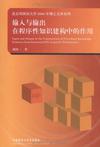输入与输出在程序性知识建构中的作用
2009-12
外语教学与研究出版社
顾琦一
364
无
本研究旨在探索教学环境下成人外语学习过程中,输入与输出对语言能力发展的作用。研究者着重从理论视角对外语习得进行探讨,运用安德森(Anderson)(1983,2000,2004)的思维适应性控制理论(AdaptiveControlofThought),把第二语言能力发展界定为程序性知识逐步建构的过程。程序性知识是第二语言学习者解决各类语言任务的知识。程序性知识的建构由知识表征和知识提取的发展共同促成,通过不断实践(practice)来实现。陈述性知识在程序性知识建构过程中虽然起到了积极作用,但是并不能转换成为程序性知识。 第二语言程序性知识的建构通过输入、输出两类语言实践来成就。输入在语言习得中不可或缺,输入和输出在二语习得过程中不可分割,因此本研究建立了将输入与输出结合起来进行考察的理论和研究框架。 本研究通过控制对比实验考察了输入和“输入+输出”语言实践在第二语言程序性知识建构过程中的作用。实验选取英语关系从句为目标语言项,对成人外语学习者分别进行了输入和“输入+输出”两种语言实践的实验处理。研究者对被试者在前测、后测和跟踪后测中,实施理解、表达和语法判断三类计时语言运用任务中的表现,进行组间比较和组内比较,发现被试者在陈述性知识发展基本稳定的情况下,“输入+输出”组的程序性知识发展明显优于输入组。实验结果表明:输入与输出语言实践的结合在输入和输出都有限的外语环境下的二语习得过程中必不可少。
List of TablesList of FiguresAbbreviationsChapter 1 Introduction1.1 Background of the Present Study1.1.1 Status of Research into Input and Output in SLA1.1.2 Characteristics of Instructed EFL Learning1.2 Scope of the Present Study1.3 Research Methodology1.4 Significance of the Study1.5 Outline of the Dissertation1.6 Definition of the TermsChapter 2 Foreign Language Development: A Construction Process of Procedural Knowledge2.1 Introduction2.2 Language and Language Acquisition2.2.1 Modular Positions2.2.2 Non-modular Positions2.2.3 Position of the Present Study2.3 Theoretical Framework: The ACT Theory2.3.1 Declarative Knowledge and Procedural Knowledge2.3.2 Stages of Knowledge Development2.3.3 A Problem with the ACT Theory2.4 Supportive Arguments from Studies of L2 Knowledge2.4.1 Bialystoks Theory2.4.2 McLaughlins Theory2.4.3 Convergence of Anderson, Bialystok and McLaughlin2.5 Declarative Knowledge in the Development of Procedural Knowledge2.5.1 The Non-interface Positions2.5.2 The Interface Positions2.5.3 Position on the Interface Issue in the Present Study2.6 SummaryChapter 3 Input-based and Output-based L2 Learning Theories3.1 Introduction3.2 Input-based Learning Theories3.2.1 The Input Hypothesis3.2.2 The Input Processing Model and Processing Instruction3.3 Output-based Learning Theories3.3.1 Early Theories Incorporating Output into L2 Acquisition3.3.2 The Comprehensible Output Hypothesis3.4 A Preliminary Reanalysis of the Role of Input and Output3.4.1 Inseparability of Output from Input3.4.2 De Bots Speculation About Output in Proceduralization3.5 SummaryChapter 4 English Relative Clauses and Acquisition Studies4.1 Introduction4.2 English Relative Clauses4.2.1 Restrictive and Nonrestrictive English Relative Clauses4.2.2 Grammatical Description of the Restnctive Relative Clauses4.2.3 Types of Restrictive Relative Clauses in English4.3 The Noun Phrase Accessibility Hierarchy4.4 The Acquisition of English Relative Clauses4.4.1 L1 Acquisition of English Relative Clauses4.4.2 L2 Acquisition of English Relative Clauses4.5 Instructional Intervention in the Acquisition of English Relative Clauses4.5.1 Instructional Effects on L1 Acquisition4.5.2 Instructional Effects on L2 Acquisition4.6 SummaryChapter 5 Research Methodology5.1 Introduction5.2 Research Questions and Hypotheses5.3 Rationale for the Research Design5.4 Overall Design5.5 Pilot Studies5.5.1 A Case Study5.5.2 A Controlled Pilot Study5.6 Research Design5.6.1 Subjects5.6.2 Experimental Schedule5.6.3 Treatment5.6.4 Instruments5.6.5 Scoring and Analysis5.7 SummaryChapter 6 Results6.1 Introduction6.2 Examination of Pretreatment Equivalence6.3 Analysis of the Offline GJT6.4 Examination of the 12 Research Hypotheses6.4.1 Results of the Immediate Posttest6.4.2 Results of the Follow-up Posttest6.5 Further Analysis6.5.1 Effect Size Analysis6.5.2 Comparison Between the Comprehension and the Production Tasks6.5.3 Comparison Between the Online GJT and the Ofitine GJT6.6 SummaryChapter 7 Discussion and Conclusion7.1 Introduction7.2 Role of Input and Output in the Construction of Procedural Knowledge7.2.1 Role of Input and Output in Promoting Comprehension7.2.2 Role of Input and Output in Promoting Production7.2.3 Role of Input and Output in the Metalinguistic Tasks7.2.4 Role of Input and Output Rephrased7.3 Implications for L2 Pedagogy7.4 Limitations of the Present Study7.5 Directions for Further Research7.6 SummaryAppendix 1 Subjects Background QuestionnaireAppendix 2 Treatment MaterialsAppendix 3 Assessment Instruments: Set 1Appendix 4 Assessment Instruments: Set 2Appendix 5 Assessment Instruments: Set 3References
Figure 2.1 describes Bialystoks postulation of the twodimensions of language proficiency. It is suggested that analysis andcontrol, the two components responsible for the structure and accessto mental representations develop with maturity and experience(Bialystok, 1994a: 161). The two dimensions are continua rather thandichotomies. Experience in language learning involves practice, bothinput-based receptive practice and output-based productive practice.Knowledge develops in the direction of more explicitness (namely,from unanalyzed to analyzed knowledge), and more fluency (namely,from low to high control), as a result of modification of mentalrepresentation by analysis and control (Bialystok & Ryan, 1985). Alllearners, L1 as well as L2, are thought to start from lower values ofthe two dimensions (Bialystok, 1988). Carefully designed tasks aresaid to be possible to reveal what is unobservable in commonsituations (Bialystok, 1990).Analysis and control are thought to be independent in the sensethat high control does not necessarily imply high analysis or viceversa. But at the same time, the two components contribute jointly tolearners proficiency development and online language processing.

无